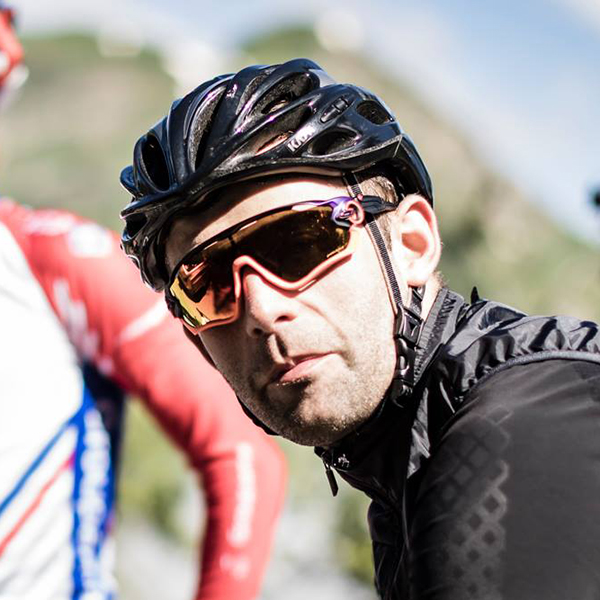Trek’s Emonda is the American brand’s lightweight race bike, and in some respects has led the recent trend towards a unified geometry approach to pro bike design.
It makes use of Trek’s H1.5 geometry, matching the latest Madone SLR, and fits into the picture as the brand’s easy-to-swap-to option for the mountains when ultimate aero efficiency is less important.
Overall, the Emonda impresses with its stiff, competent carbon frameset, and will be a handy companion if your idea of fun is climbing mountains.
That said, although the Shimano 105 R7020 groupset is as steadfastly slick and solid as ever, the Emonda SL 5 Disc is ripe for some component upgrades to really unlock its obvious potential.
Trek Emonda SL 5 Disc specifications
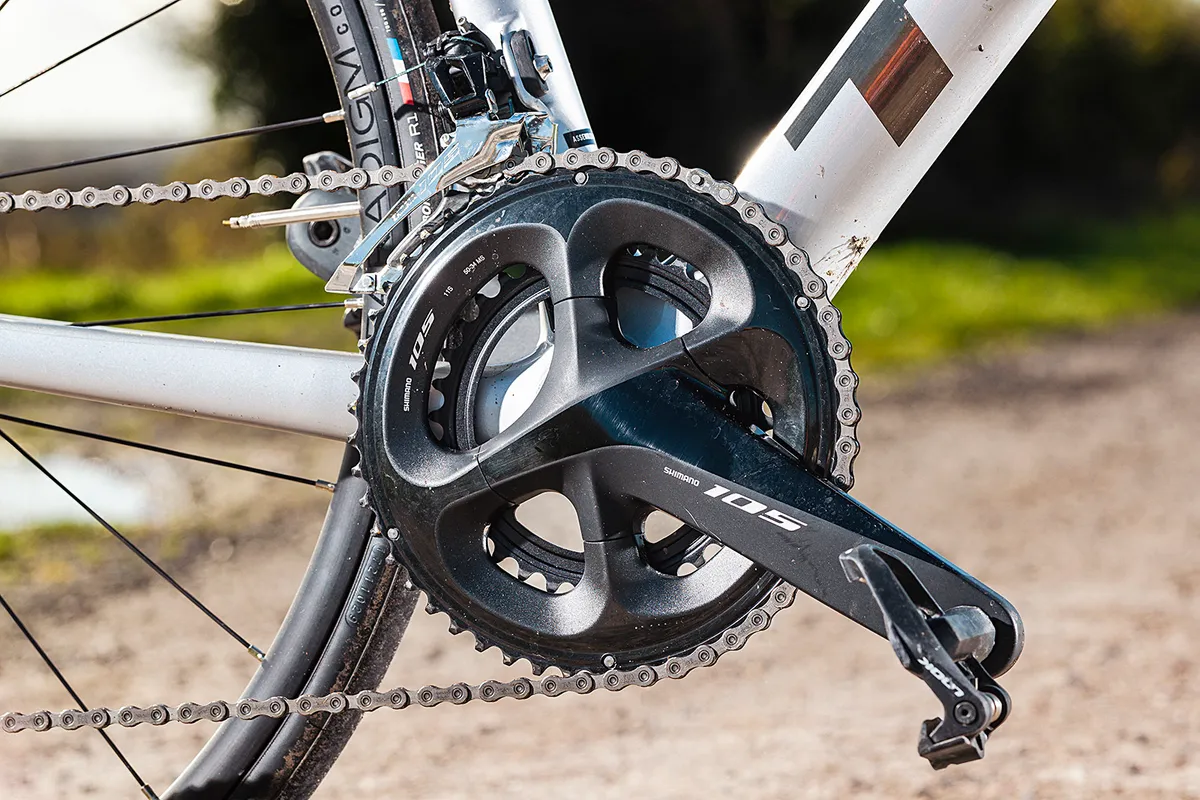
The Trek Emonda SL 5 Disc has precisely the same frameset as the SL 6 Pro, as tested by Jack Luke soon after the bike’s launch back in 2020. We’ve also reviewed an SL 6 AXS in our sister magazine Cycling Plus issue 397.
That means Trek’s 500 Series OCLV carbon, which is the brand’s second-tier carbon material (living under the flagship 800 Series OCLV carbon you get on the brand’s ‘SLR’-spec framesets).
Essentially, this brings with it around a 445g total weight penalty for an unspecified-size frameset. All in, an Emonda SL frame tips the scales at a claimed 1,142g, while the fork weighs 380g.
Although you’re not getting a featherweight frame here (a Canyon Ultimate SL frame, for example, easily undercuts the 1,000g mark), the bike benefits from the same aero overhaul the SLR frameset received.
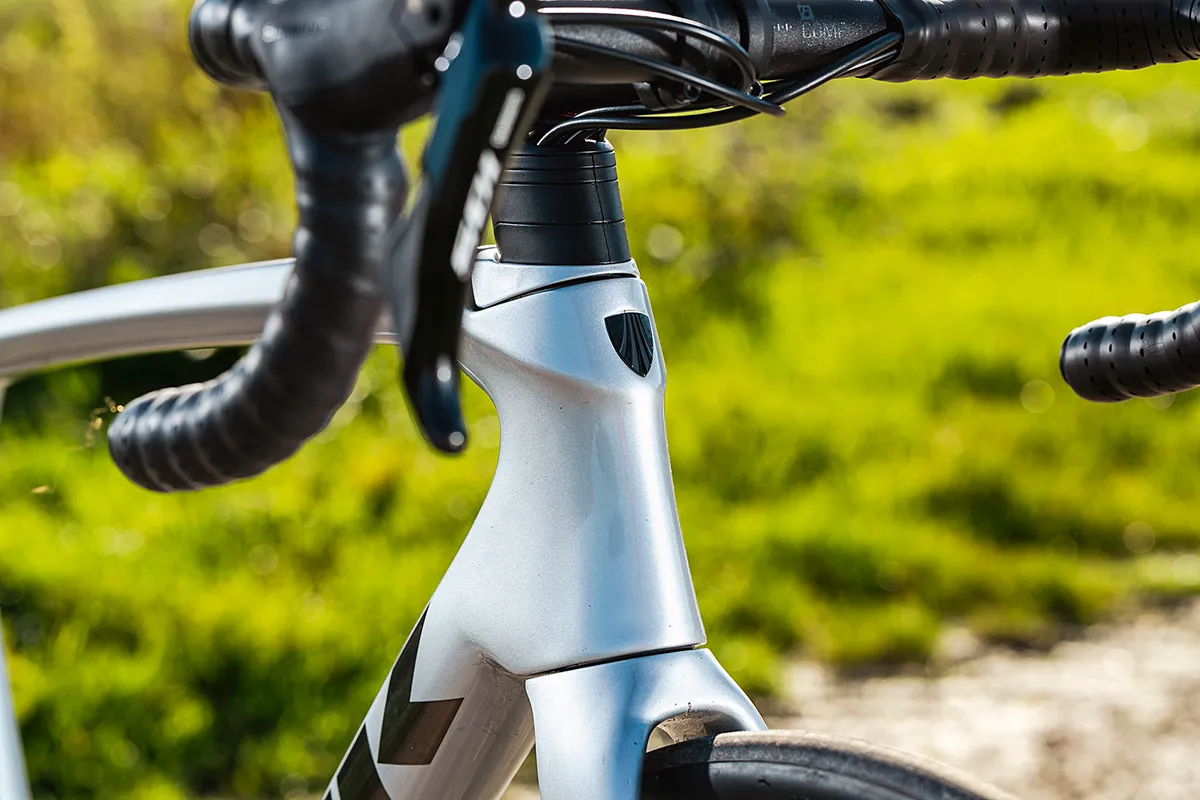
Visually, there’s a deep and aero-optimised head tube, along with broad tube profiling at the down tube and in the swooping top tube.
The squared-off backsides to the tubes indicate a bias towards easy handling and aero efficiency at lower speeds, which should reflect the Emonda’s prime usage case as a climbing bike.
The Trek Emonda SL 5 Disc frame features fully internal cable routing, with cables and hoses entering through ports in the front of the headset.
The fork features a 1-1/8in steerer, while the bottom bracket is a threaded T47 model, moving away from Trek’s erstwhile (and much maligned) BB90 press-fit system.
The brakeside chainstay also incorporates a mounting point for Trek’s DuoTrap module (available separately), which can transmit wheel speed and cadence data via ANT+ and Bluetooth.
Trek Emonda SL 5 Disc geometry
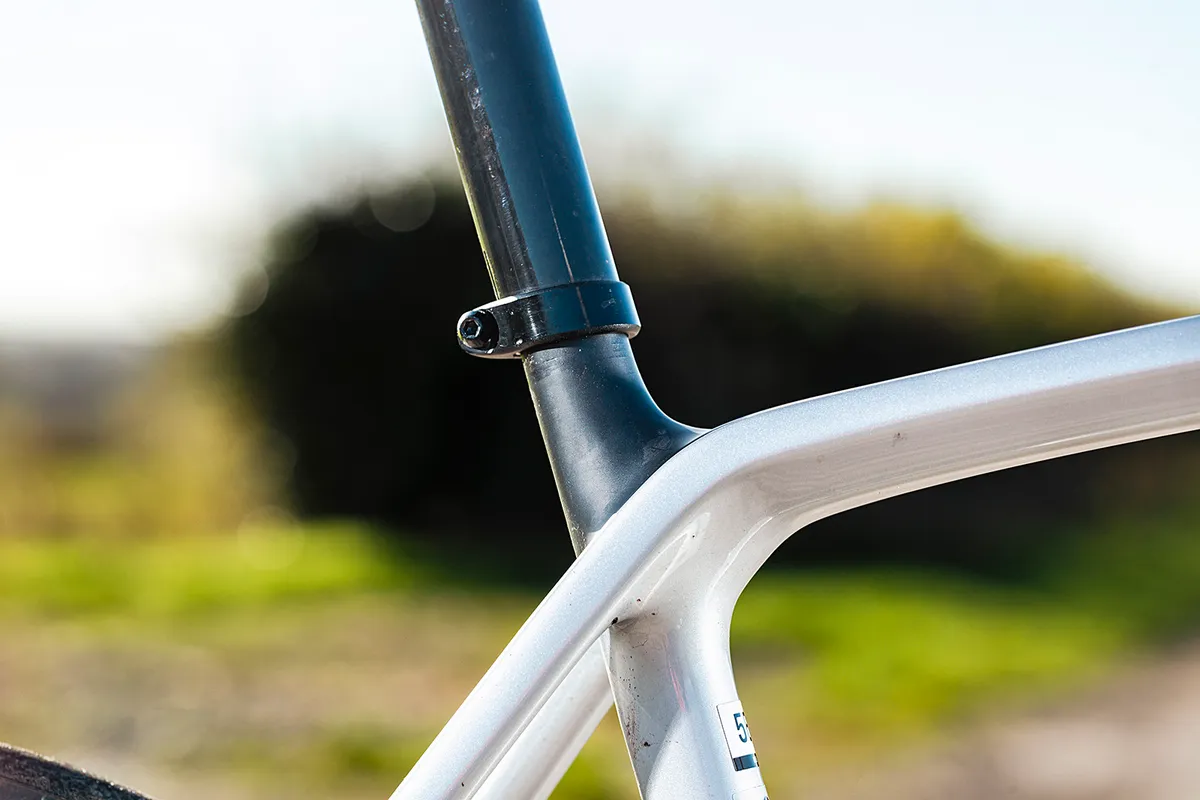
The geometry of the Emonda SL 5 Disc is race-bike oriented.
Adopting the H1.5 specification – Trek calls it 'H1.5 Race' in its official specification as if to hammer home the point – it sits between the most aggressive H1 geometry you can buy on the top-of-the-line RSL SLR frameset, and the H2 geometry (also available in an SLR-spec frameset).
What strikes home immediately is the relatively short reach for what is ostensibly a race bike. In a size 56cm (which is roughly equivalent to a size large elsewhere), the frame’s reach measures 391mm, which is roughly in the region of what I’d expect for an endurance bike.
That’s coupled here with a 100mm-length stem, which only serves to magnify the stubby feel.
It pairs with a quite low-slung 563mm stack height, a steep 73.5-degree head tube angle and a compact 983mm wheelbase (with 410mm chainstays).
It features a more compact and aggressive fit than rival bikes, and if you don’t happen to fit neatly into a particular size, you might need to consider choosing the larger of the two options you’re deliberating over.
In short, the Emonda handles sharply, with direct steering and efficient power delivery.
| | 47 | 50 | 52 | 54 | 56 | 58 | 60 | 62 |
|---|---|---|---|---|---|---|---|---|
| Seat angle (degrees) | 74.6 | 74.6 | 74.2 | 73.7 | 73.3 | 73 | 72.8 | 72.5 |
| Head angle (degrees) | 72.1 | 72.1 | 72.8 | 73 | 73.5 | 73.8 | 73.9 | 73.9 |
| Chainstay (mm) | 410 | 410 | 410 | 410 | 410 | 411 | 411 | 412 |
| Seat tube (mm) | 424 | 453 | 483 | 496 | 525 | 553 | 573 | 593 |
| Top tube (mm) | 512 | 521 | 534 | 543 | 559 | 574 | 586 | 598 |
| Head tube (mm) | 100 | 111 | 121 | 131 | 151 | 171 | 191 | 211 |
| Fork offset (mm) | 45 | 45 | 45 | 45 | 40 | 40 | 40 | 40 |
| Trail (mm) | 68 | 62 | 58 | 56 | 58 | 57 | 56 | 56 |
| Bottom bracket drop (mm) | 72 | 72 | 72 | 70 | 70 | 68 | 68 | 68 |
| Wheelbase (mm) | 972 | 974 | 977 | 981 | 983 | 992 | 1,001 | 1,010 |
| Standover (mm) | 692 | 711 | 732 | 744 | 768 | 793 | 811 | 829 |
| Stack (mm) | 507 | 521 | 533 | 541 | 563 | 581 | 601 | 620 |
| Reach (mm) | 373 | 378 | 383 | 386 | 391 | 396 | 399 | 403 |
Trek Emonda SL 5 Disc performance
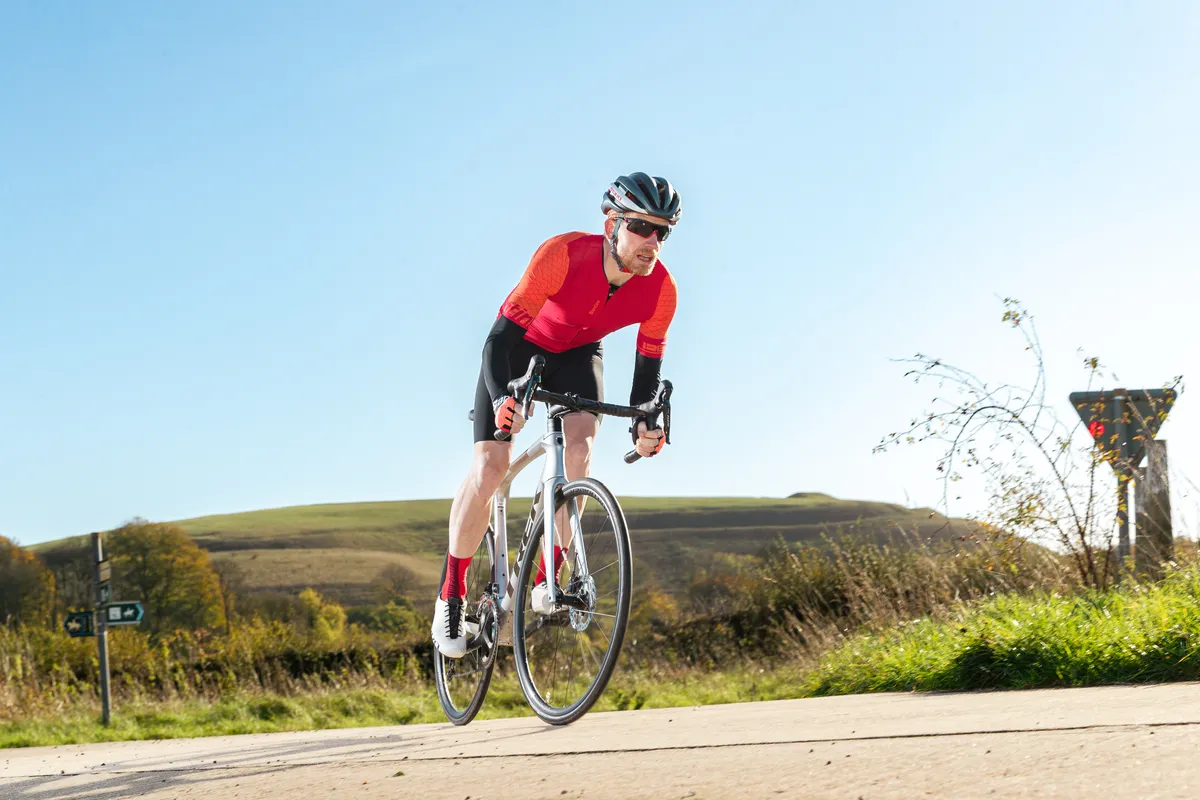
If your idea of a good time is riding a bike with whippet-sharp reactions, with a proclivity for traversing climbs, the Trek Emonda SL 5 Disc won’t disappoint.
The stiff carbon layup, combined with the compact geometry, produces a frame that’s impressively rigid – arguably the match of any bike you care to throw into the mix.
To borrow an excerpt from Jack’s review of its sibling: “It’s got that addictive ultra-efficient feel with a totally unyielding pedal response that is amazing on the climbs – you are giving up nothing to the frame when mashing yourself into a lactic oblivion.”
I can confirm that it’s genuinely startling at times how efficient the frame can feel, either when seated or when giving gusto over a rise in the road.
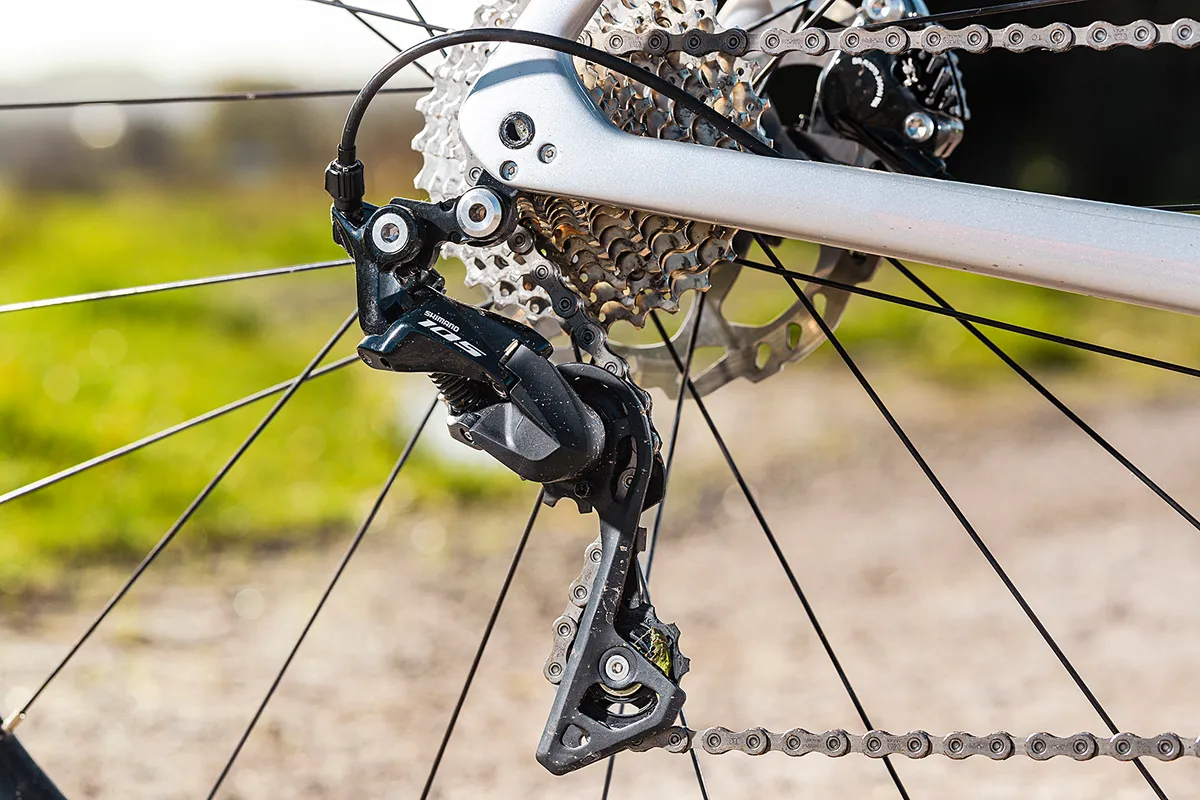
At this spec level, there’s no doubt wheels and tyres, and probably even elements of the finishing kit, leave ultimate speed on the table, but I’ll get to that below.
The downside to such a stiff frameset, in this case, is a lack of overall compliance. The ride borders on harsh here, and although the seatmast design (where the traditional seatpost setup is reversed, with a mast topper overlapping an extended seat tube) offers some ride-smoothing properties, it can’t mask the clear focus of the Emonda frame.
In all conditions, the Emonda SL 5 Disc feels light – lighter than its 8.89kg total weight would make you think – and when descending, turns are initiated with resolute ease.
If you find yourself trundling over some broken or poor-quality tarmac, the experience is slightly juddery.

The alloy Bontrager Paradigm SL wheels and R1 clincher tyres don’t offer bags of feel and are a weak point. Cheaper bikes, such as Scott’s Addict 30 and Canyon’s Endurace AL 7, which I tested alongside the Emonda SL 5, outstrip this spec.
That said, it’s common for wheels and tyres to be upgraded to maximise the performance of the overall package, and I never lacked confidence in the handling of the Emonda SL frameset.
Trek hasn't ignored aerodynamics either, with the Emonda feeling efficient on the flat and stable in crosswinds. Road bike wheels with deeper and more aerodynamic rims would likely transform its character in this regard, although that could be said of many bikes at this price point.
Trek Emonda SL 5 Disc finishing kit
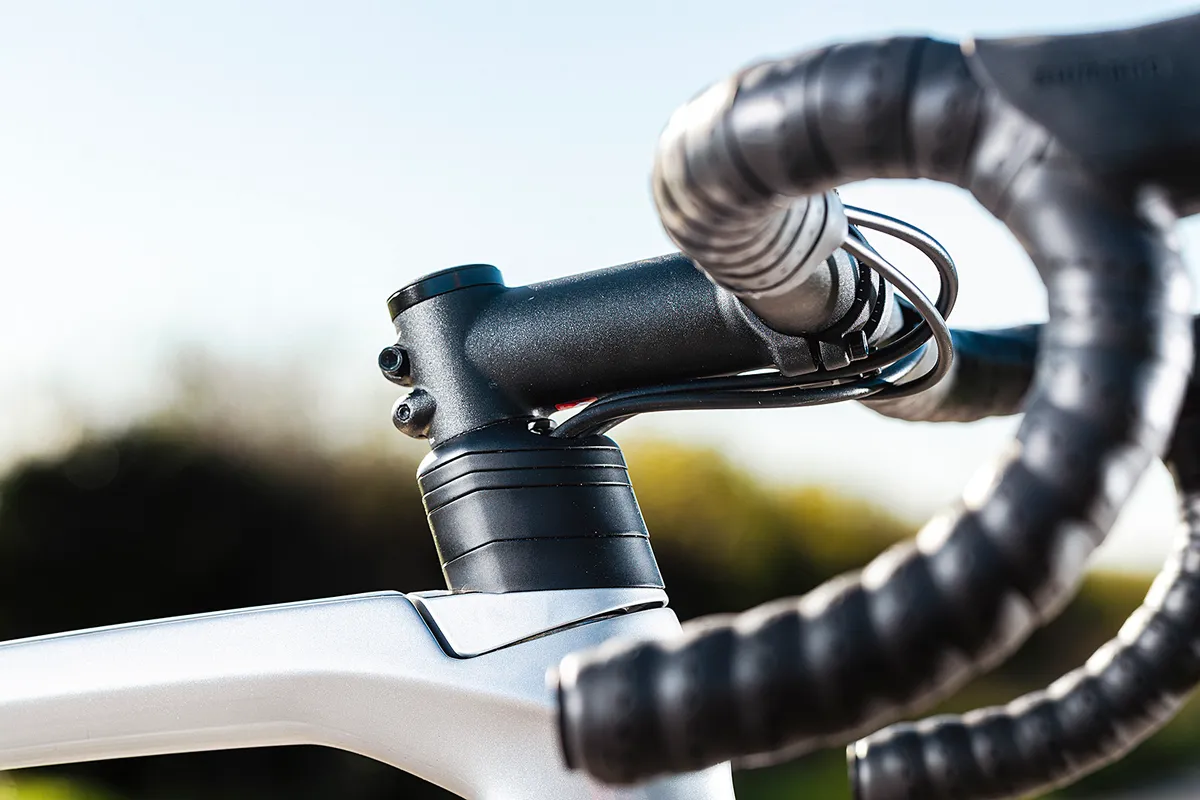
The Trek Emonda SL 5 Disc comes packaged with finishing kit from Trek’s in-house components brand, Bontrager.
The cockpit is a two-piece affair, with a 31.8mm-diameter Bontrager Comp VR-C bar married to a Bontrager Elite stem.
Both are alloy, and offer a comfortable range of positions for your hands to rest, although I’d personally make the most of Trek’s strong retail presence and spec a 10mm longer stem for free to push out the reach a little.
My only criticism is they appear a little noodle-like, probably down in part to Trek designing the frame around the integrated RSL-spec cockpit. They also didn’t feel quite broad enough in my large hands.
I couldn’t discern any excess flex, though I think there’s something reassuring (and visually pleasing) about a bar-stem setup that looks broader, especially on a bike with such a profiled head tube.
Fortunately, the 1-1/8in steerer and standard 31.8mm handlebar clamp offer practically limitless scope for customising the front end to your needs.
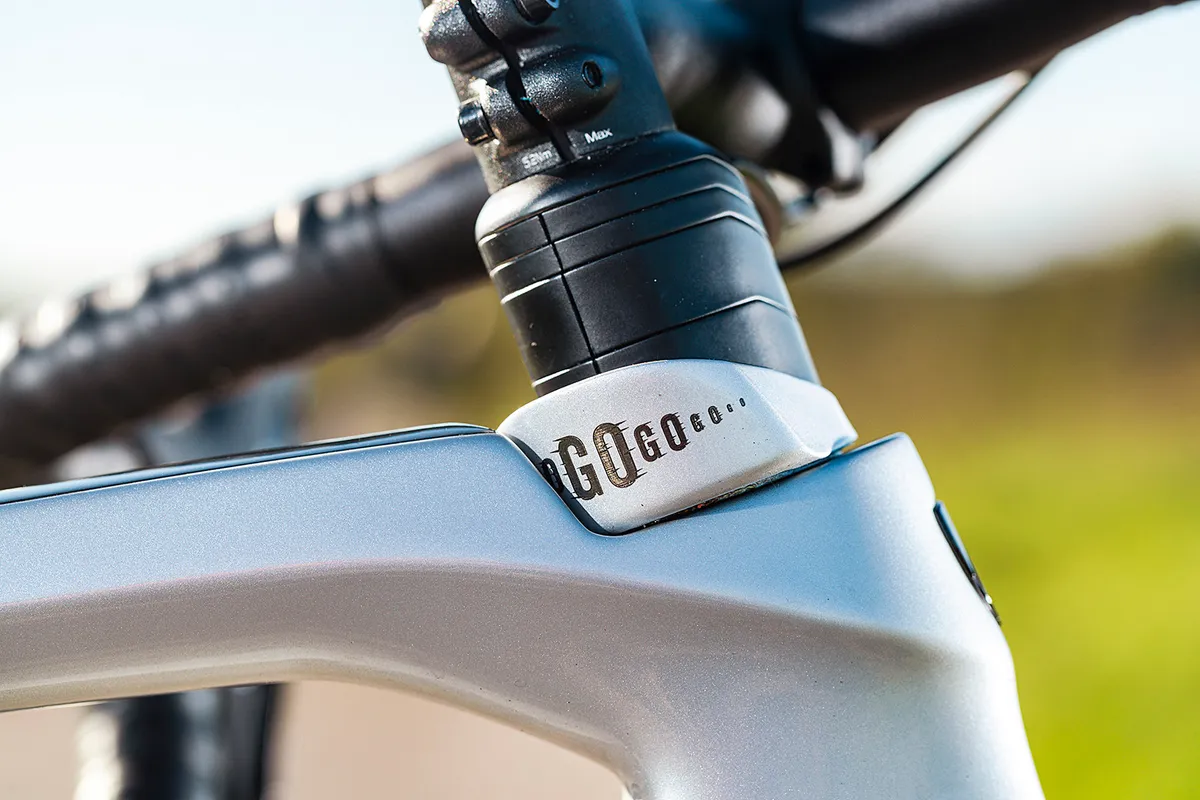
The Bontrager Supertack Perf tape is comfortable to grip on the move; texturally, it’s tackier than most, but that’s not a bad thing when you’re holding the tops and really working the pedals on a climb.
The seatmast arrangement is something of a signature for Trek – interestingly, it was dropped for a more standard setup on the new Madone SLR – taking the form of an extended seat tube that’s then capped by the mast, which has the saddle bracket on top.
The Emonda SL 5 Disc gets an alloy model of the seatmast cap, with 10mm of setback. Carbon is better recognised as a premium, ride-smoothing material in this area, but the alloy material here is mitigated somewhat by the extended carbon seat tube it fits on.
On top of the seatmast lives a Bontrager P3 Verse Comp saddle. I enjoyed the shorter nose design, and many will appreciate the plentiful padding in conjunction with the provided perineal pressure-relieving cutout.
I found the outer material to be curious. It’s a rubberised material to the touch, which ‘grabbed’ at the bib shorts I wore during testing. Under my shifting weight, I felt a chattering effect while I pedalled as the chamois moved across the saddle.
It’s odd to find this in two separate bib shorts. If I were living with the bike long-term, I’d probably swap it over for my preferred Fizik Antares Versus Evo Adaptive saddle.
Trek Emonda SL 5 Disc groupset, wheels and tyres
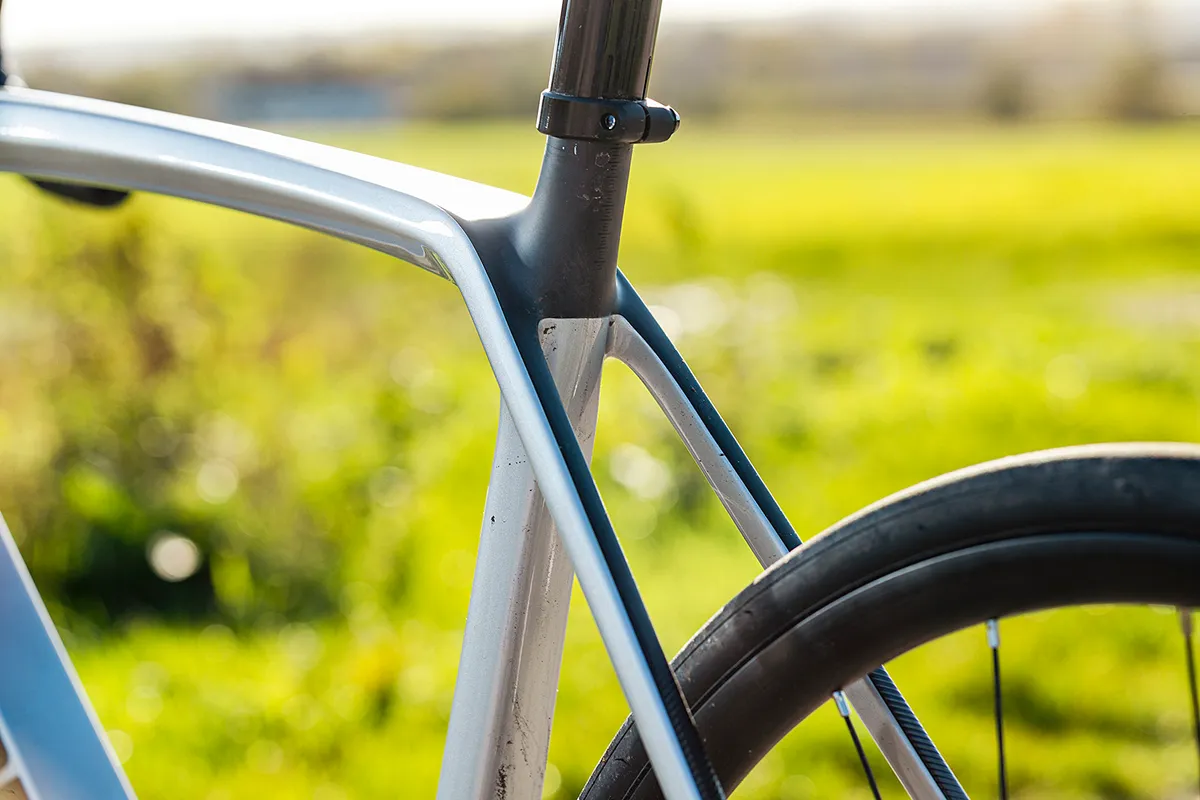
A full Shimano 105 R7020 groupset adorns the Emonda SL 5 Disc, and Trek has really leant into the race intentions of the bike by speccing an 11-30t cassette with a short-cage derailleur.
That means if you want any easier gears – essentially, any cassette with a 32, 34 or even 36t sprocket – you’ll also need to invest in a new medium-cage derailleur and possibly a new chain as well.
The saving grace for many will be the fitting of a compact (50/34-tooth) chainset, but in turn stronger riders may find the 50x11t combination a little limiting on descents. They may need to look one rung up the Emonda range at Ultegra R8000 or R8150 Di2 before they get a semi-compact (52/36-tooth) chainset as stock.
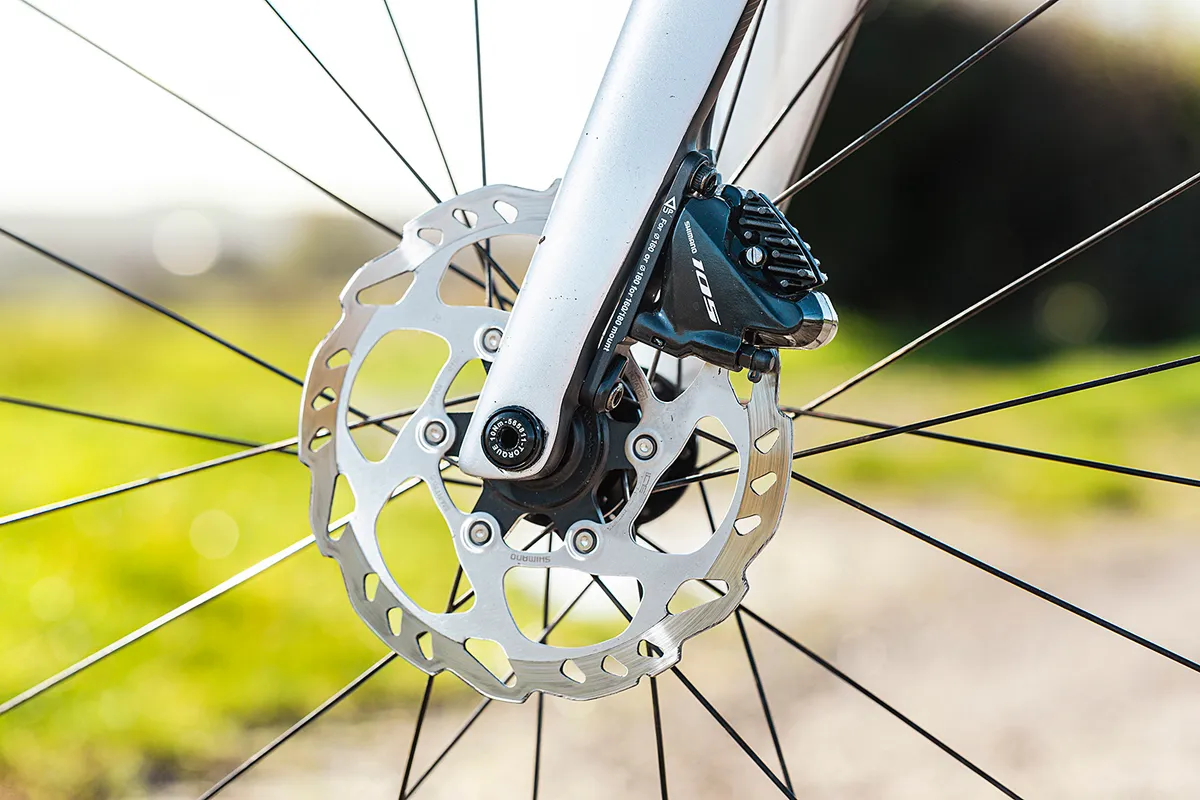
Of course, like the rear derailleur, you could opt to upgrade the R7000 chainset to a semi-compact or standard (53/39-tooth) model, but that will inevitably add to the overall expense of the bike.
The wheels and tyres represent a dip in the overall build, and would be areas to seriously consider upgrading to maximise the potential of the Emonda SL 5 Disc.
The tubeless-ready Bontrager Paradigm SL wheels feature a shallow alloy rim, a 21mm internal width and are laced using 24 spokes, both front and rear. The alloy hubs use sealed-cartridge bearings.

On paper, they’re certainly not exotic, but the trade-off is easier and lower-cost serviceability. Unless you particularly crave a wheelset with a wider internal rim width to better support broader tyre widths, they’ll do the job as a competent three-season wheelset you won’t mind putting through the proverbial wars once in a while.
On the tyre front, the Bontrager R1s provide middling grip, but again I’d be looking to upgrade them for a premium set of clincher or tubeless tyres, perhaps with a more supple compound and casing, for the best summer days.
During testing, in the 2022 UK autumn (albeit a relatively benign season, weather-wise) I was unfortunate enough to suffer a puncture to the R1 rear tyre.
The concerning nature of the puncture – a sizeable V-shaped cut into the flexible sidewall – indicates that the R1s wouldn’t necessarily be a tyre I’d want to rely upon in poor conditions, accepting sheer bad luck.
Combined, the 28c tyres measure out almost precisely for their claimed width, leaving behind ample free space for at least 700 x 30c rubber, and possibly even 700 x 32c tyres if you don’t mind pushing the limits of the clearance.
Bontrager states official clearance to be 700 x 28c, although the benefits of running wider tyres at lower pressures – especially with the Emonda SL frame’s overall rigidity in mind – are obvious and desirable.
Trek Emonda SL 5 Disc bottom line
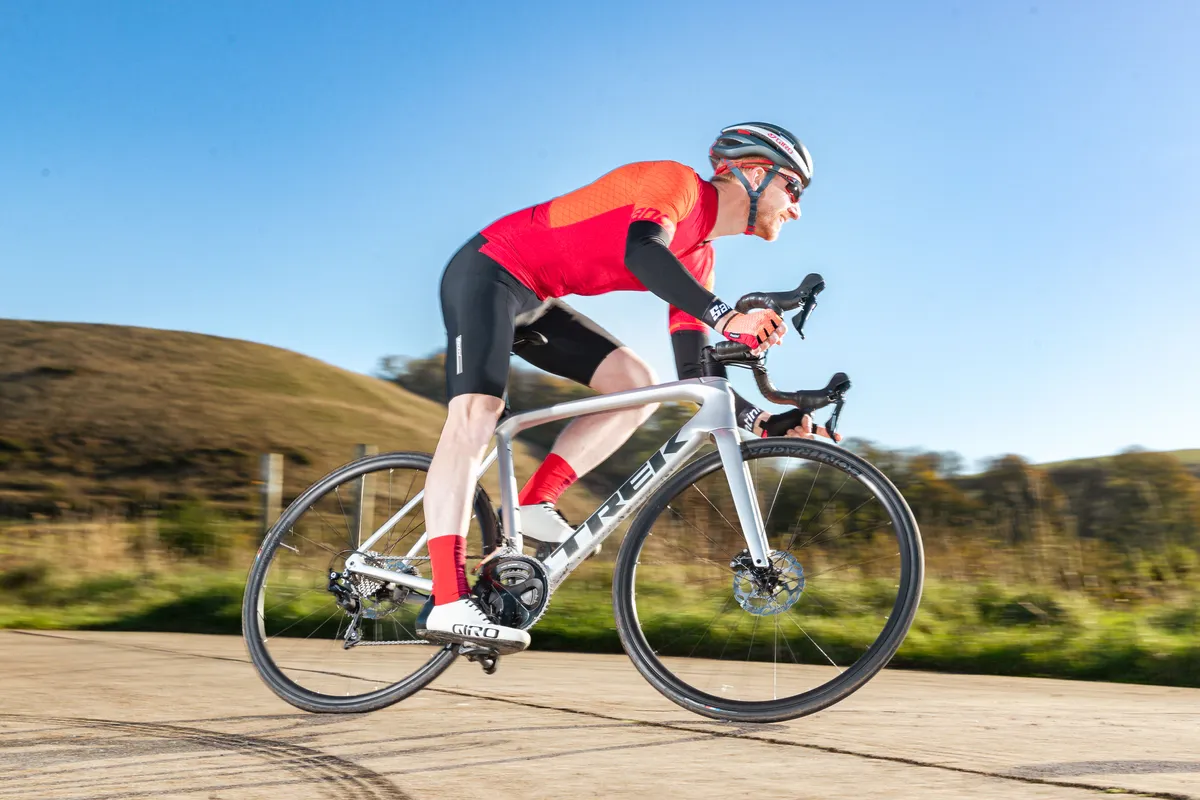
The Trek Emonda SL 5 Disc – in 2023 to be named simply the Emonda SL 5, and with a Sterling price hike of £550 to reflect the economic times – represents an accessible entry point into the world of carbon race bikes while the 2022 model is still in stock.
The frameset is incredibly capable, and shines brightest of all, dressed as it is in solid-but-unspectacular build.
It will suit keen sportive riders and even road racers, but most will find it necessary to upgrade some fundamental components to really get the most out of it.
Product
| Brand | trek |
| Price | 4300.00 AUD,2999.00 EUR,2700.00 GBP,3250.00 USD |
| Weight | 8.8900, KILOGRAM (56cm) - |
Features
| Fork | Émonda SL full carbon |
| br_stem | Bontrager Elite aluminium |
| br_chain | Shimano CN-HG601 11-speed |
| br_frame | Trek Emonda Ultralight 500 Series OCLV Carbon |
| Tyres | Bontrager R1 Hard-Case Lite, 700x28c |
| br_brakes | Shimano 105 R7020 hydraulic disc |
| br_cranks | Shimano 105 R7000, 50/34 |
| br_saddle | Bontrager P3 Verse Comp |
| br_wheels | Bontrager Paradigm SL |
| br_shifter | Shimano 105 R7020 |
| br_cassette | Shimano 105 R7000, 11-speed, 11-30t |
| br_seatpost | Bontrager seat mast cap aluminium |
| br_gripsTape | Bontrager Supertack Perf |
| br_handlebar | Bontrager Comp VR-C aluminium |
| br_bottomBracket | T47 threaded |
| br_availableSizes | 47, 50, 52, 54, 56, 58, 60, 62cm |
| br_rearDerailleur | Shimano 105 R7000 |
| br_frontDerailleur | Shimano 105 R7000 |
